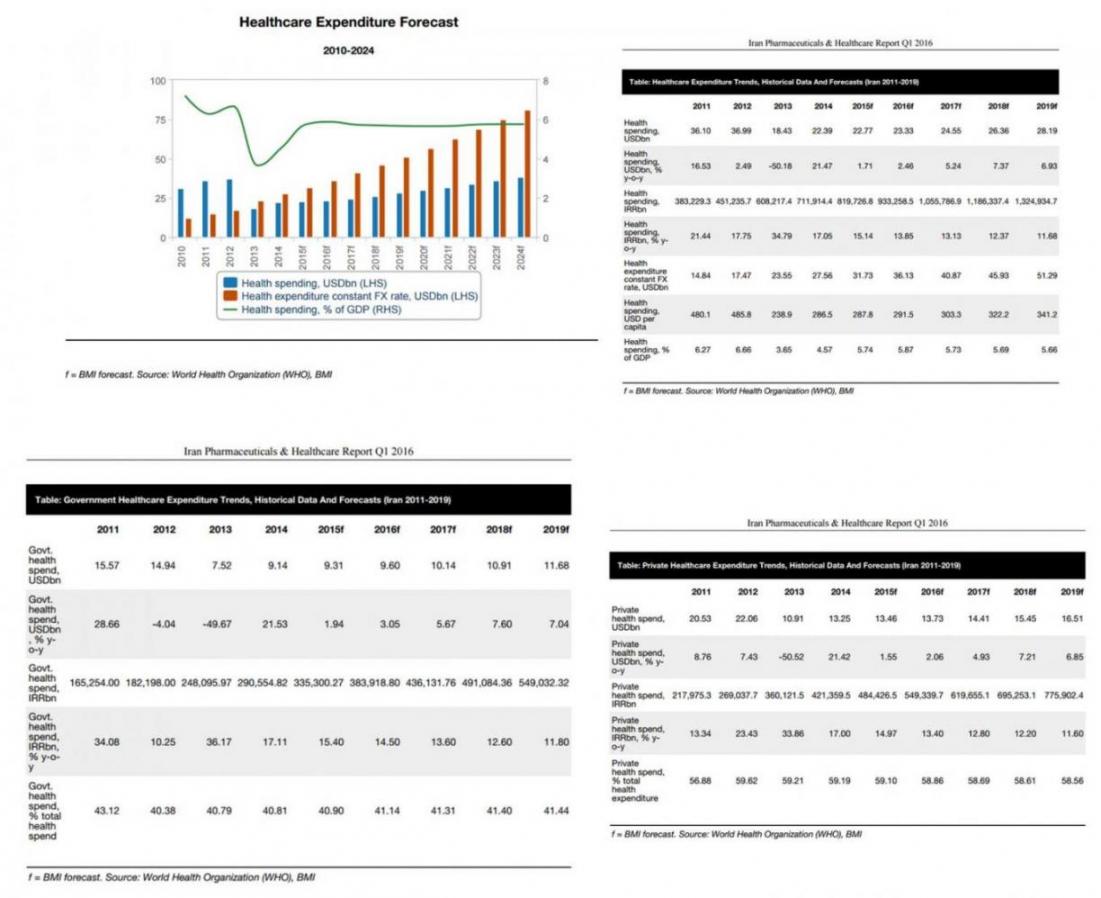The Iranian government has invested substantially in the development of the healthcare system, with investments paving the way for an increase in the number of doctors and hospitals, although quality issues have yet to be resolved.
The government has improved public access to primary and preventative care, particularly in the rural areas where more than 35% of the population reside.
Since 2005, a rural insurance scheme has been implemented, which has led to a significant decline in infant mortality among those at-risk groups. The measures have improved basic health indicators to some extent and life expectancy has been rising steadily in recent years, according to Business Monitor International.
All Iranians are eligible for community-based preventive public health and limited curative health services, financed and provided through the primary healthcare network, which is funded entirely by the national government. This system was established to improve rural access to healthcare and reduce the gap between rural and urban health outcomes.
Although Social Security Organization guarantees a minimum level of care for those who meet their insurance obligations, it also gives added benefits to those who volunteer to pay higher premiums.
Absolute spending levels have risen steadily in recent years, despite government attempts to control costs. Nevertheless, the government accounts for a progressively smaller percentage of the overall spending on health even though the country’s private healthcare coverage remains fragmented.
Although the private sector, including out-of-pocket spending, accounts for the majority of healthcare expenditure, private health insurance comprises only 2-3% of total expenditure.
The government currently meets less than half of the total healthcare spending in the country, with one-third of pharmaceuticals’ costs under health insurance continuing to be met out of pocket, despite substantial increases in the government healthcare budget in recent years on the back of growing oil revenues.
BMI estimates healthcare expenditure reached 711,914 billion rials ($22.39 billion) in 2014. By 2019, the group forecasts Iranian healthcare expenditure to reach 1.32 trillion rials ($28.19 billion), corresponding to a local currency compound annual growth rate of 13.2% (4.7% in US dollar terms).
By 2024, BMI forecasts Iran’s healthcare market to reach 2.09 trillion rials ($38.06 billion), equating to CAGR of 11.4% and 5.5% in local currency and US dollar terms, respectively.


